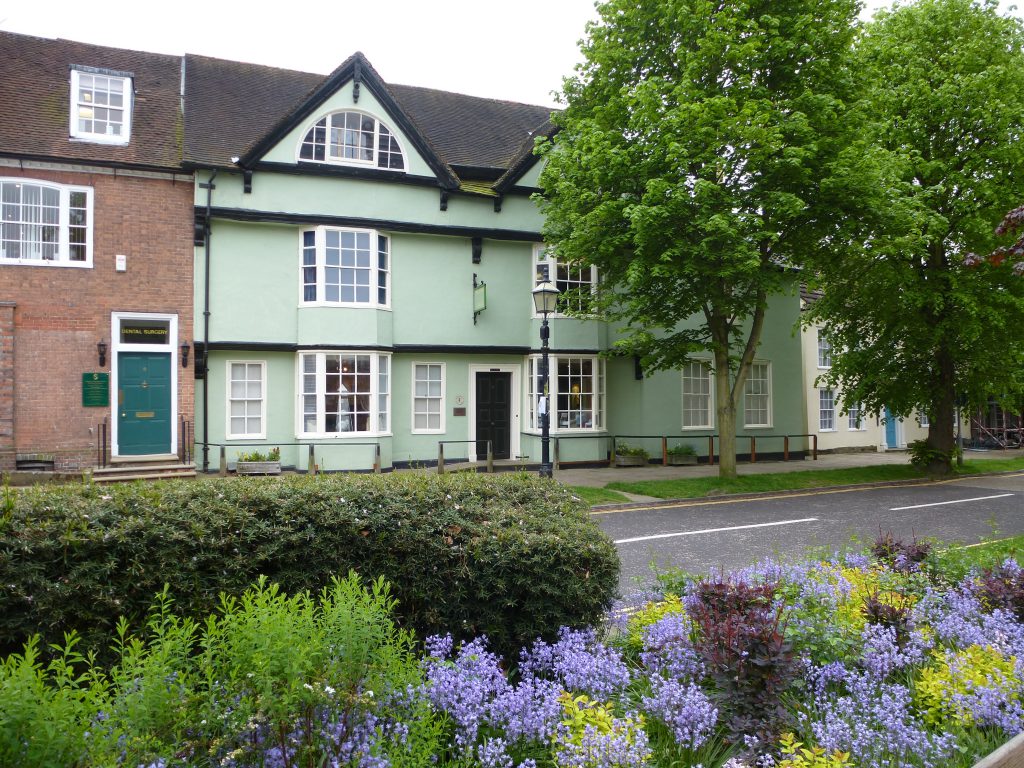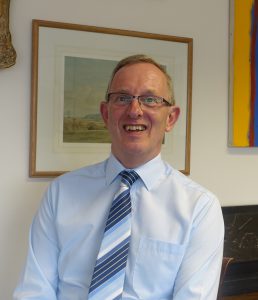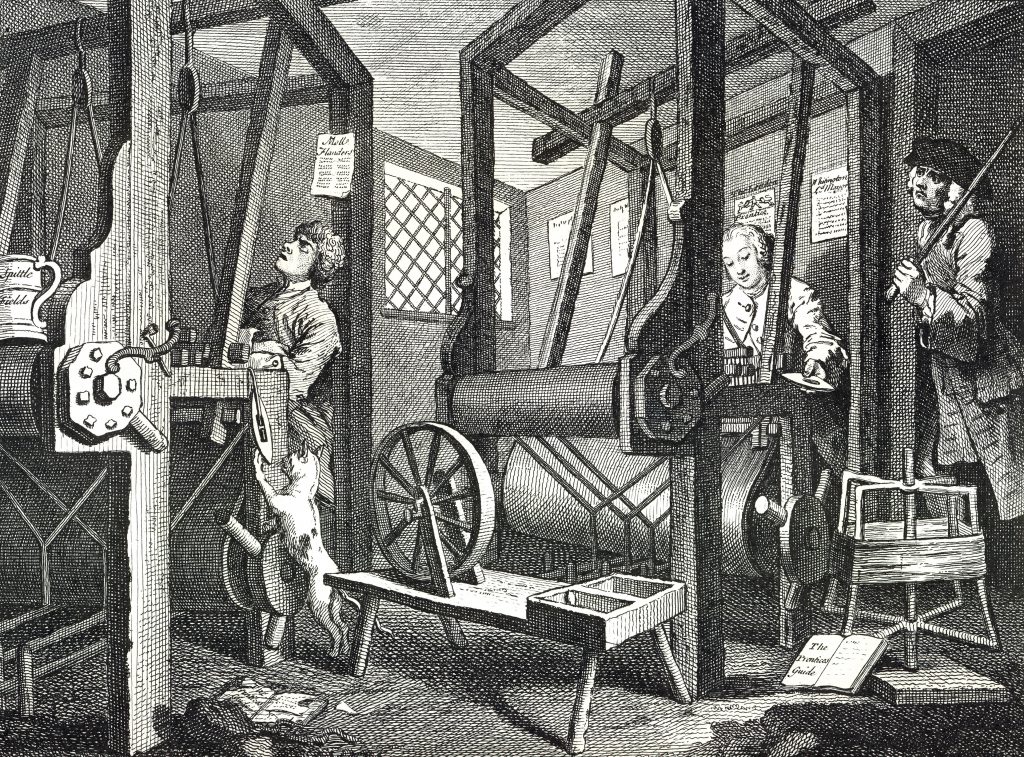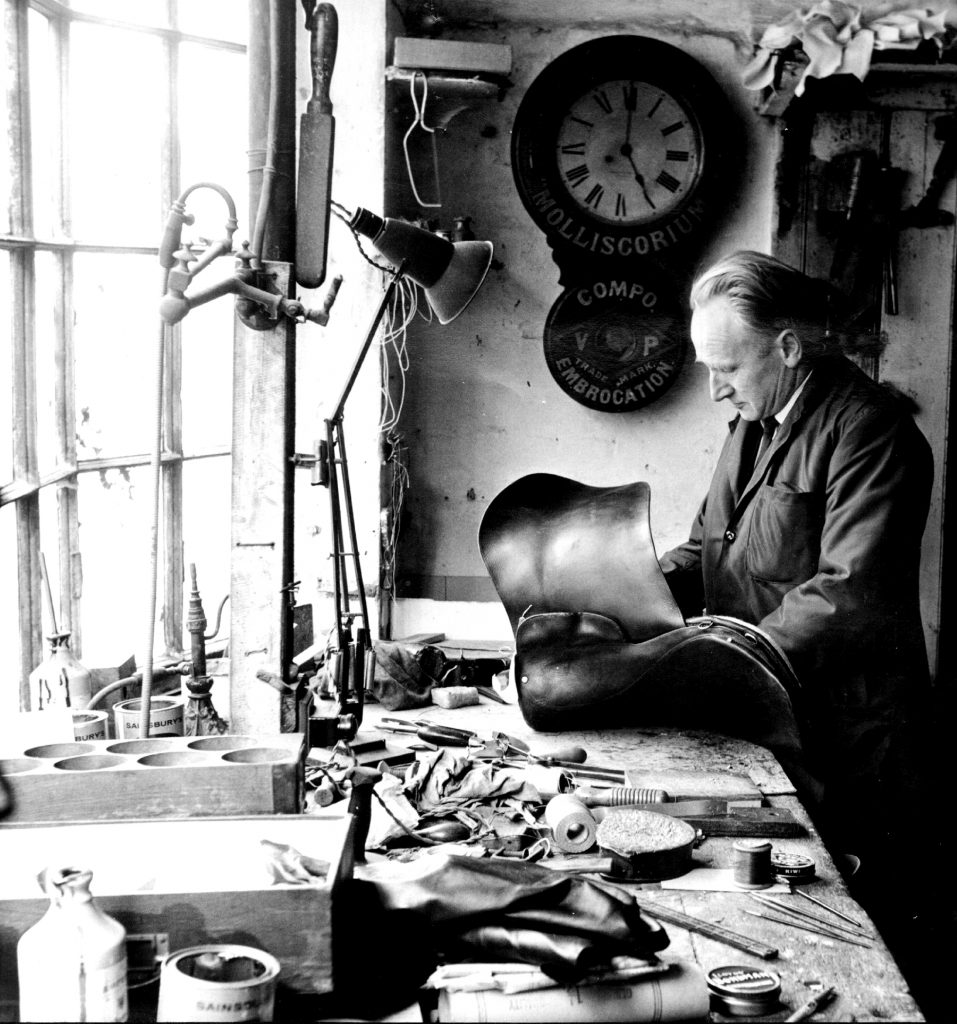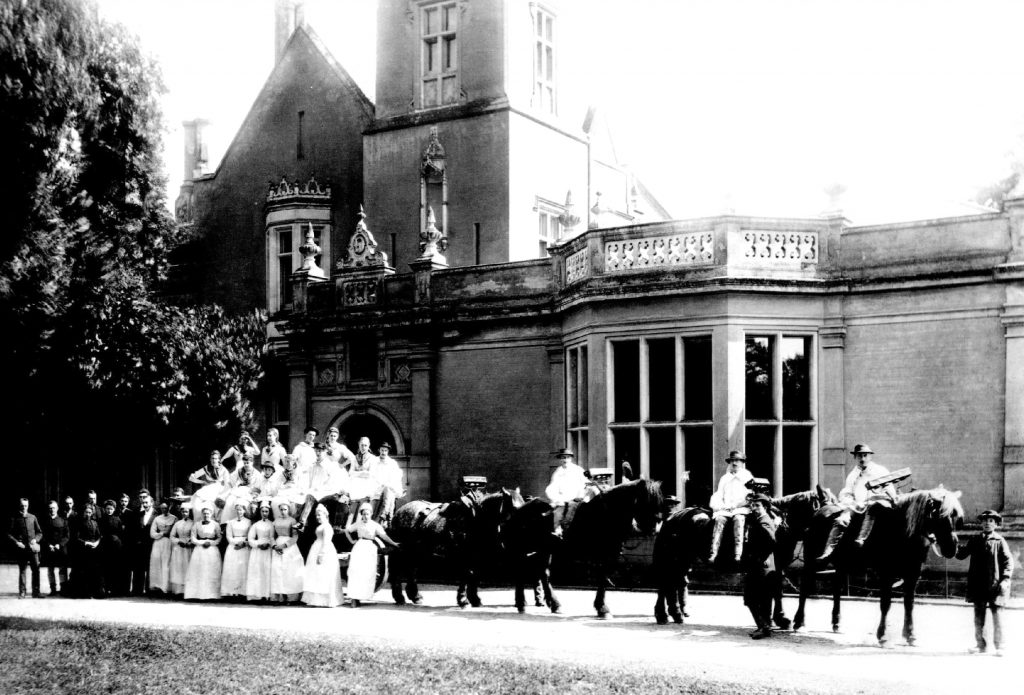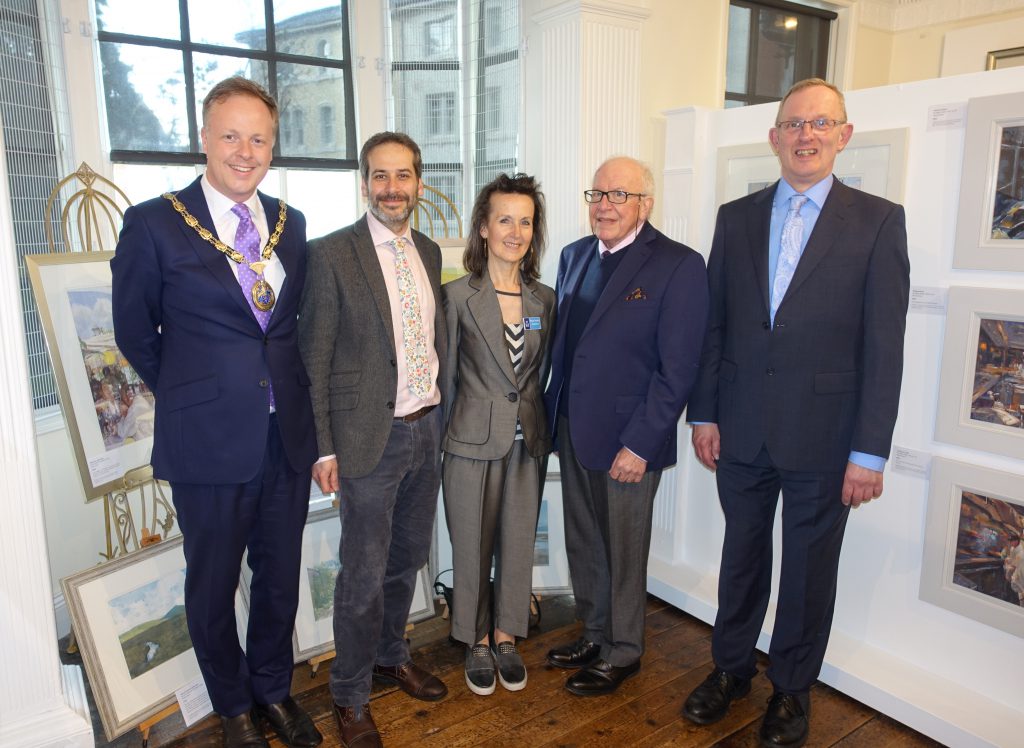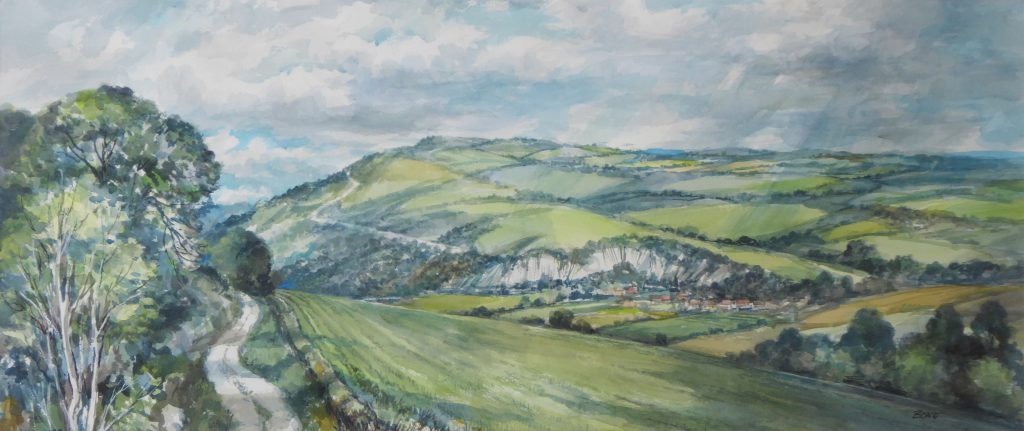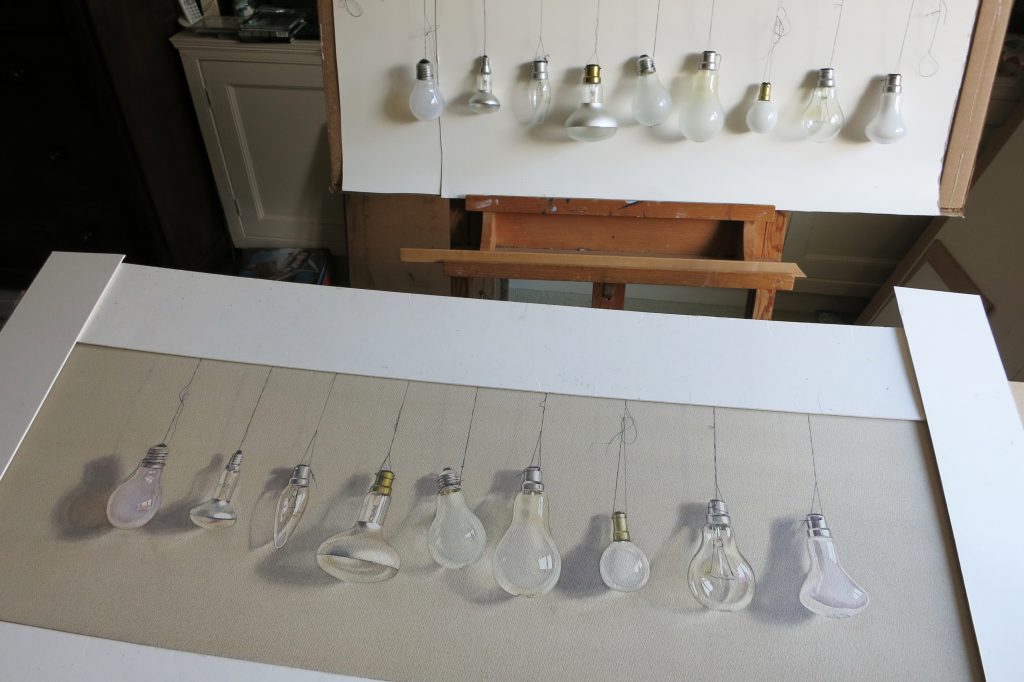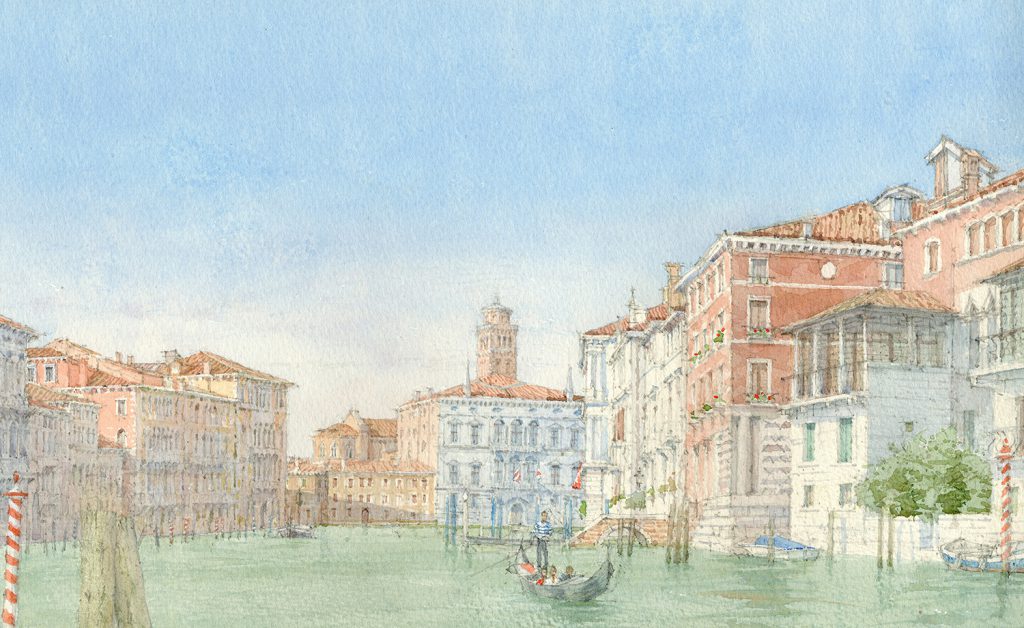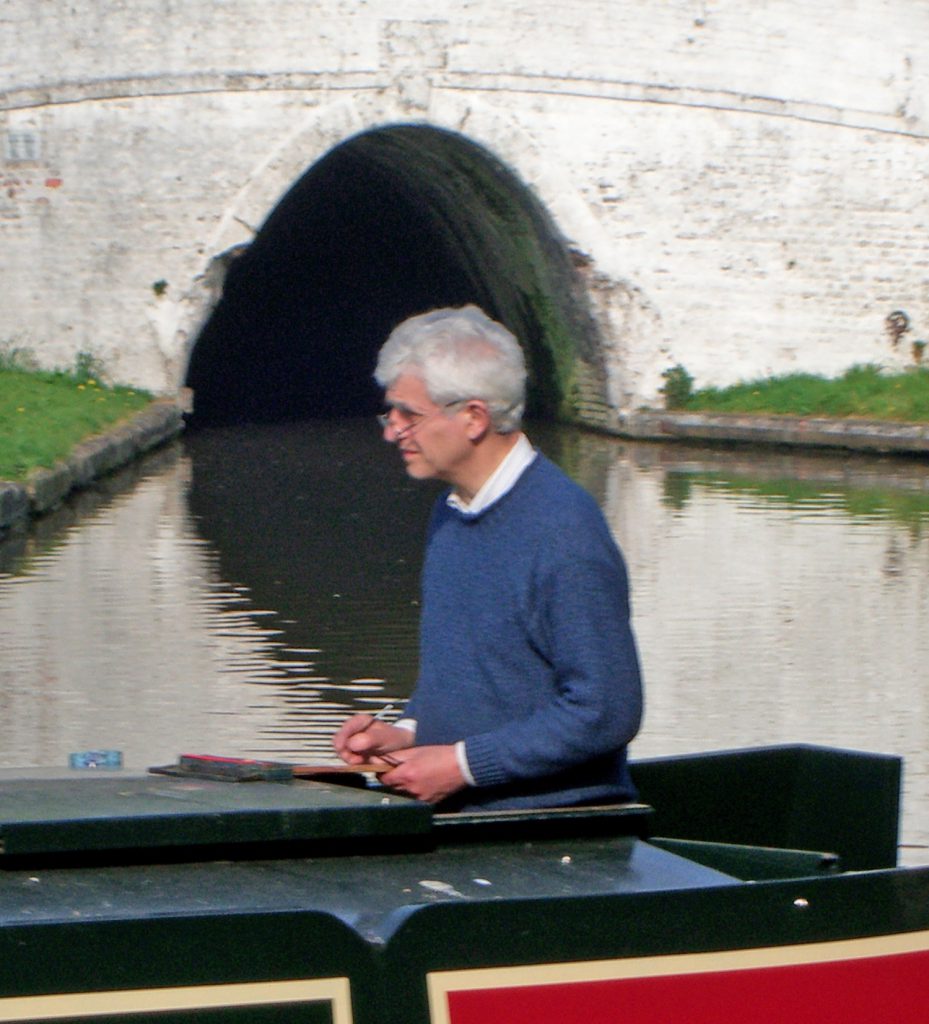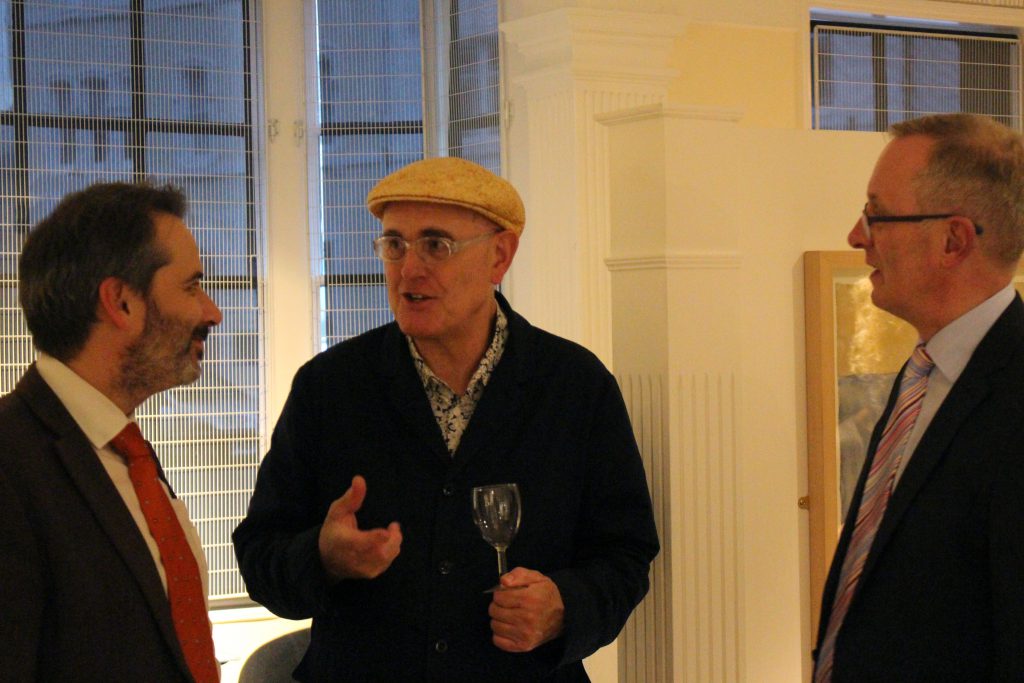
Horsham Museum & Art Gallery’s latest exhibition ‘Watercolour RA250’ explores the relationship of leading Royal Academicians with the medium of watercolour.
The exhibition was opened by Humphrey Ocean., RA, who acknowledged his connection with Sussex having been born at Hardham. He described how he follows in the footsteps of J.M.W Turner as the Royal Academy’s Professor of Perspective and the importance of Turner’s watercolours in the artist’s oeuvre.
The Royal Academy (RA) was founded in 1768 with the approval of George III. Its constitution allowed for painters in oil, sculptors, printmakers and architects to be elected to membership of the RA but not watercolourists. Exhibition Curator Jeremy Knight explained how despite this many leading Royal Academicians over the centuries have been talented watercolourists. ‘Watercolour RA250’ gives a rich insight into these artist’s relationship with the medium of watercolour. Paintings by JMW Turner, Paul Sandby, Humphrey Ocean and many other rarely seen pictures are on show. Works have been borrowed from museums and art galleries across Sussex.
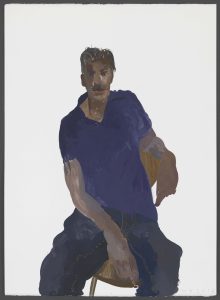
Humphrey Ocean’s work has exhibited at the National Portrait Gallery. He has been making a series of portraits of visitors to his studio since 2006. He works swiftly employing gouache on large sheets of paper. His sitters are depicted in simple bold forms and colours. These portraits are compelling illustrating the artist’s love of painting, colour and people. Ocean illuminates something unique about each person, their posture and dress, providing an intimate snapshot in time. These qualities are apparent in his striking portrait of the Horsham born artist Mark Alexander.
Two important talks will take place at the Capitol, Horsham to accompany the exhibition. On 11th October at 7pm art historian Tom Wilcox will discuss ‘Watercolour in Britain in the 20th century – mainstream or margin?’, and Greg Smith will look at the work of Thomas Girtin on 18th October at 6.30pm. Tickets are available from the Capitol by visiting www.thecapitolhorsham.com.
It is exciting to see how Horsham Museum & Art Gallery’s growing collection of watercolours is continuing to raise its profile enabling it to borrow additional major works from museums and art galleries.
None of this would be possible without Jeremy Knight and the Horsham District Council’s understanding of the importance of art and heritage to the identity and economy of Horsham and the broader district. Jonathan Chowen, Horsham District Council Cabinet Member for Arts, Heritage & Leisure, and his team are deserving of our thanks for their continued long term support of the Horsham Museum & Art Gallery.
The exhibition is supported by the Royal Academy’s RA250, The Art Fund and Toovey’s Fine Art Auctioneers. ‘Watercolour RA250’ runs until 17 November 2018, at the Horsham Museum & Art Gallery, The Causeway, Horsham, RH12 1HE and admission is free. For more information go visit www.horshammuseum.org.
By Rupert Toovey, a senior director of Toovey’s, the leading fine art auction house in West Sussex, based on the A24 at Washington. Originally published in the West Sussex Gazette.
